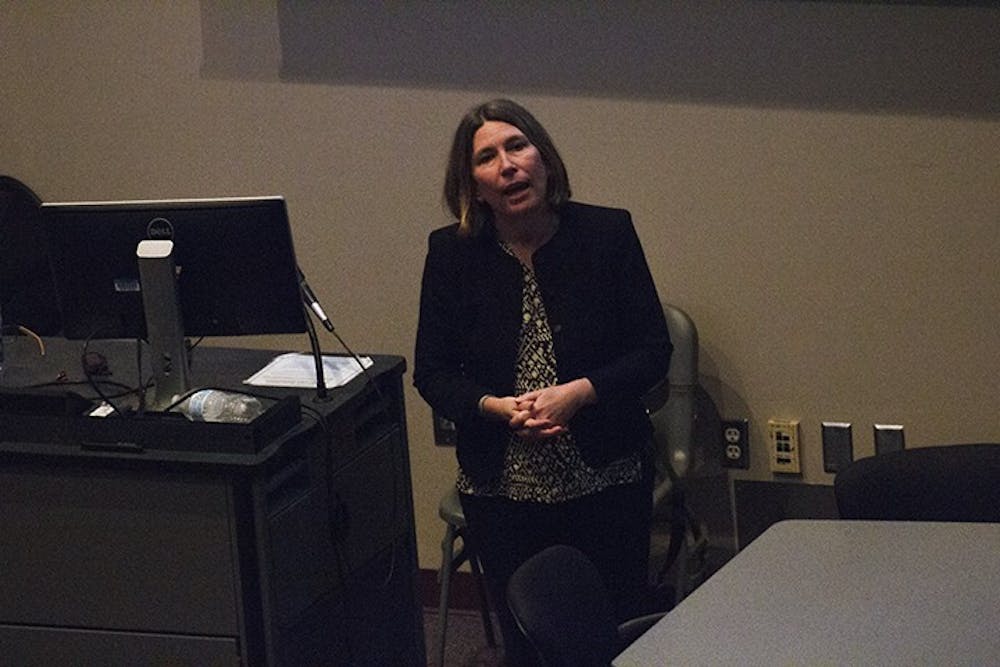Kimberly Goyette from Temple University on Wednesday afternoon presented research in the Grove Forum that supports the theory that school segregation influences residential segregation.
Seventy-three percent of students go to the school assigned to their home, according to Goyette.
People choose their homes to be around people who are like them and to maintain their status, but they also consider things such as services, parks and crime rates, Goyette said.
Local residents also perceive that school quality goes down as more minority groups integrate into predominately white schools. However, schools with less than 78 percent of white students did not see much change in quality.
“Segregation is consequential. [It’s] consequential for learning outcomes. It’s also consequential for learning opportunities,” she said.
Homes with good quality schools are worth more money, and people network with people of the same or higher status to find good schools.
White middle class people are also more likely to choose their home around schools rather than other races or classes.
Wealthy people are not as influenced by the school assigned to their area because they can afford to send their children to private schools, according to Goyette.
White families with young children are more likely to move out of diverse neighborhoods.
Goyette concluded her lecture with the idea that where people live and where their children go to school have effects on later life outcomes, and create further inequalities across social groups.
“We have some sense that segregated schools might provide different learning opportunities. We know they lead to different outcomes from our research.”


The Slate welcomes thoughtful discussion on all of our stories, but please keep comments civil and on-topic. Read our full guidelines here.